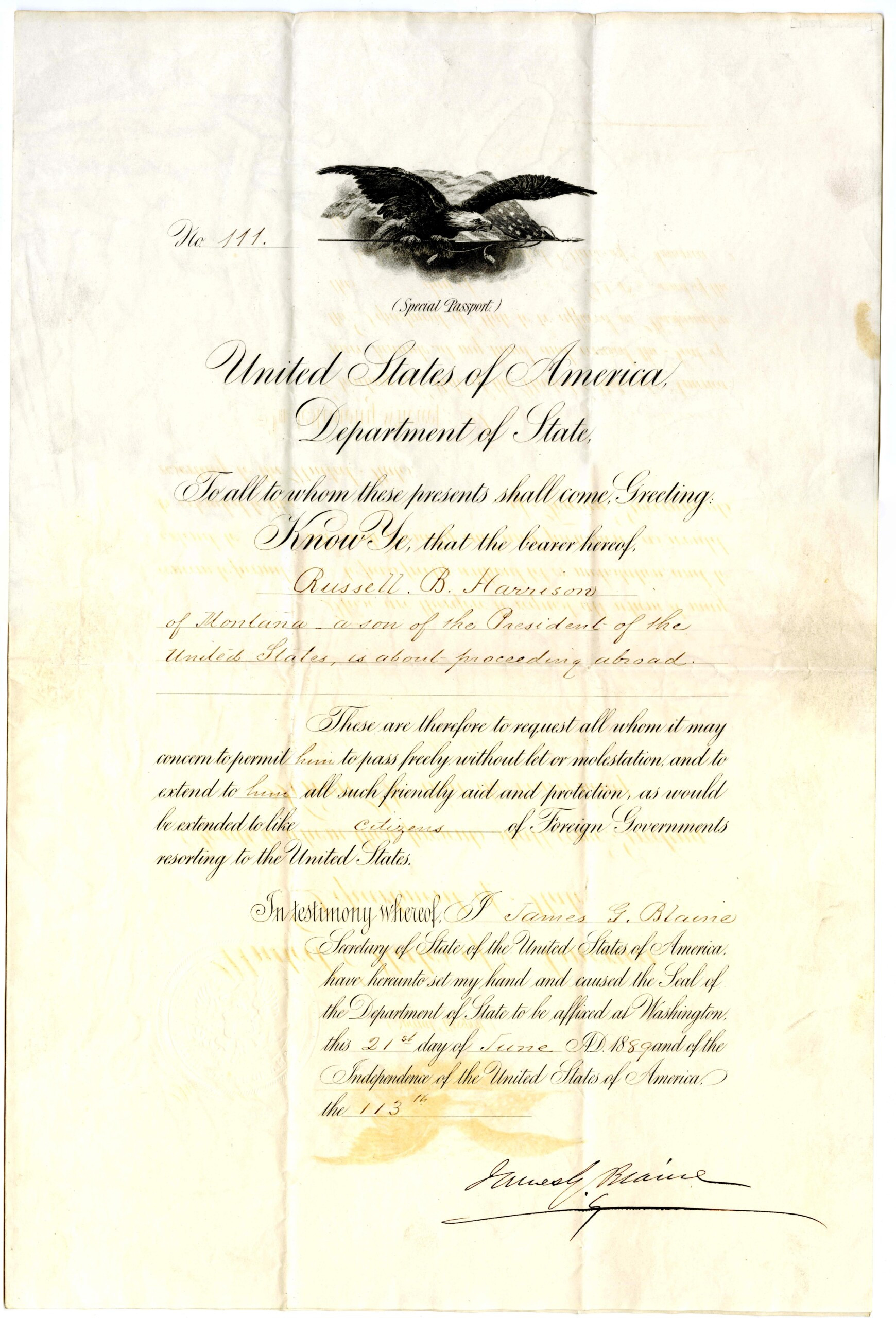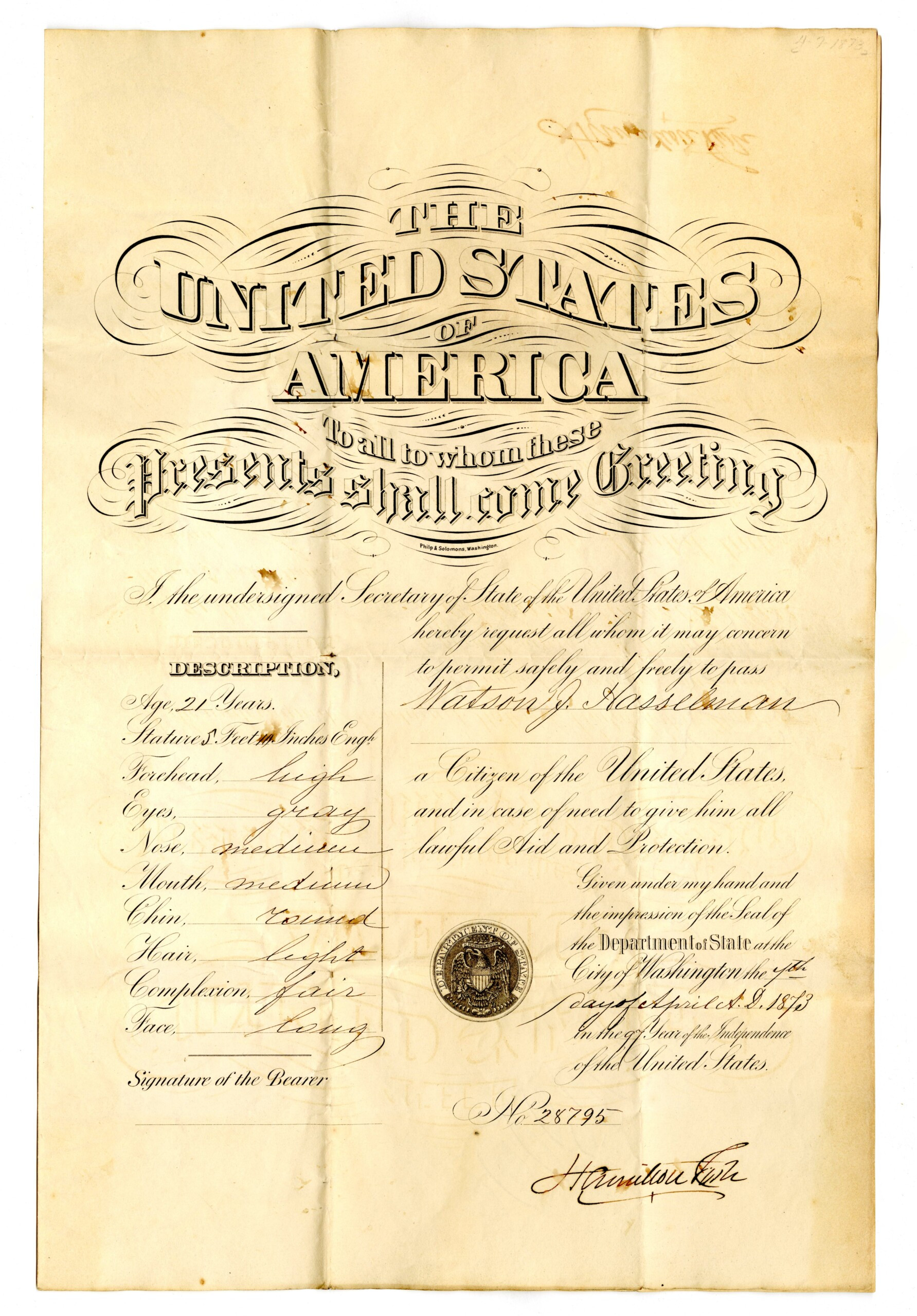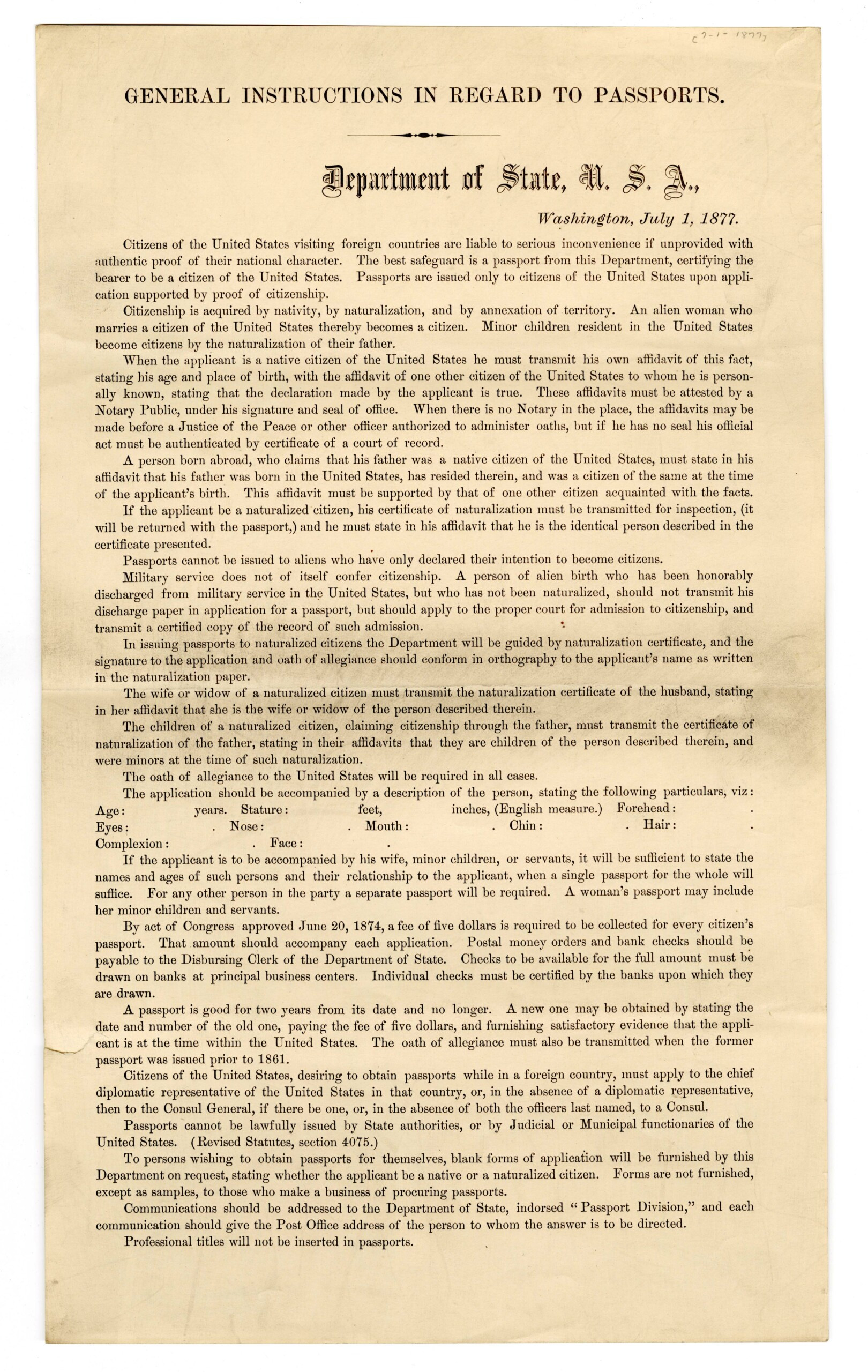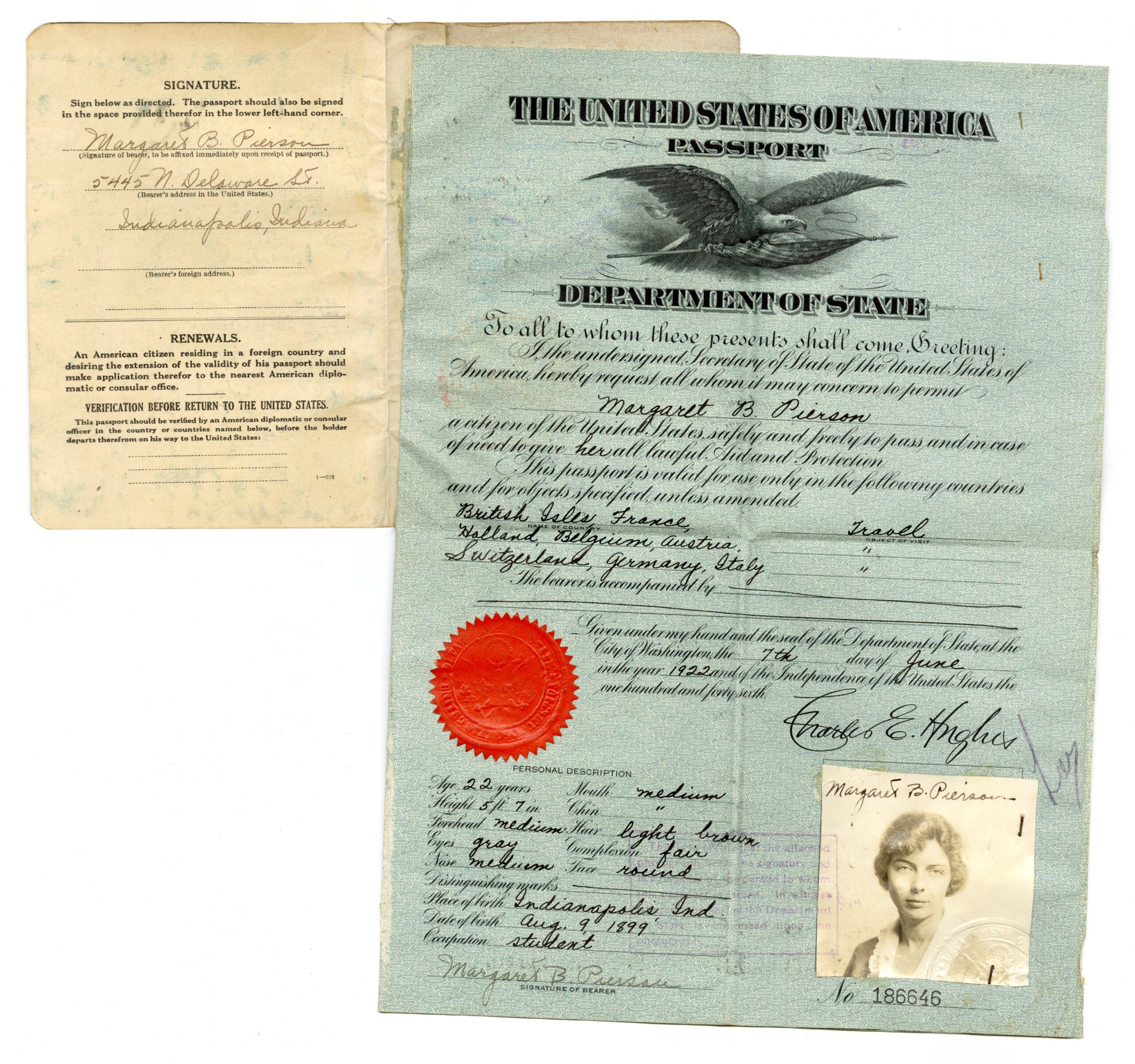Planning an international trip, especially to a vibrant destination like Vietnam, requires careful consideration of travel documents. At SIXT.VN, we understand the importance of hassle-free travel, and knowing when passports became a standard requirement is crucial for your preparations. Let’s explore the history of passport requirements and how SIXT.VN can help you navigate your travel needs, ensuring a smooth and enjoyable journey. Think of us as your trusted travel advisor, assisting with everything from airport transfers to hotel bookings and exciting tours in Hanoi.
1. What is the Historical Context of Passport Usage?
Passports, in their earliest forms, were not the universally required travel documents we know today. Instead, they emerged over centuries, evolving from simple letters of safe passage to standardized booklets.
Early Forms of Travel Documentation
Travel documents existed long before modern passports. Ancient Persia (around 450 B.C.E.), India, and China (3rd century B.C.E.) used documents to ensure safe passage. These early forms acted more like permission slips, verified by rulers or government officials.
Medieval Travel Documents
During the Middle Ages, various regions issued travel documents. The Islamic Caliphate, Italian city-states, and England all had systems for internal and international travel. These documents varied, but they served the purpose of identifying travelers and their permissions.
King Louis XIV and “Passe Ports”
King Louis XIV of France popularized the “passe port,” personally signing letters requesting safe passage for his court favorites. This practice helped develop the concept of passports as official documents. The word “passport” itself comes from the French term meaning “to pass through a seaport,” reflecting the importance of sea travel at the time.
2. How Did Passports Evolve in the 19th Century?
The 19th century saw significant changes in passport usage, transforming them from personalized letters to standardized forms.
Standardization in Europe
By the 19th century, European countries began issuing passports through authorized government entities rather than individual monarchs. These were often large, single-page documents.
United States Passport Issuance
In the United States, passport issuance was decentralized until 1856. Before then, states, cities, and notaries public could issue passports alongside the Department of State. An act of Congress in 1856 centralized the authority to the Department of State.
Passport Requirements in the 19th Century
Most countries, including the U.S. and those in Europe, did not require citizens to hold passports for international travel except during wartime. Passports were mainly for government officials, the wealthy, and prominent individuals to ease their journeys.
 Russell B. Harrison passport, 1889. Source: Benjamin Harrison collection (L063), Rare Books and Manuscripts, Indiana State Library.
Russell B. Harrison passport, 1889. Source: Benjamin Harrison collection (L063), Rare Books and Manuscripts, Indiana State Library.
Passport Details in the 1800s
Passports in the 19th century typically included the traveler’s name, country of origin, issuing authority’s signature, and issue date. Additional details might include the intended destination or purpose of travel. These documents were often for single trips and sometimes included expiration dates.
Physical Descriptions in Passports
Many passports began to include the age and physical descriptions of the holder. For example, Watson J. Hasselman’s 1873 passport included these details. Photographs were not standard until 1914.
 Watson J. Hasselman passport, 1873. Source: Hasselman and Blood family papers (L385), Rare Books and Manuscripts, Indiana State Library.
Watson J. Hasselman passport, 1873. Source: Hasselman and Blood family papers (L385), Rare Books and Manuscripts, Indiana State Library.
3. When Did Passport Fees Begin?
The implementation of passport fees marked a significant shift in accessibility and regulation.
First Passport Fee in the U.S.
The U.S. government began charging for passports in 1862, with an initial fee of $3. This fee fluctuated over the next several decades, rising to $5 in 1865, dropping to zero during 1870-1871, returning to $5 in 1874, and then decreasing to $1 in 1888.
Fee Fluctuations
The instability in passport fees made them a luxury for many Americans, especially since they were not always required.
Dramatic Increase in 1920
In 1920, passport fees dramatically increased to $10, the most significant rise since their introduction. This change coincided with increased international travel after World War I, making it less affordable for those with limited means.
 U.S. Department of State, “General instructions in regards to passports” document (S3463), Rare Books and Manuscripts, Indiana State Library.
U.S. Department of State, “General instructions in regards to passports” document (S3463), Rare Books and Manuscripts, Indiana State Library.
4. How Did World War I Influence Passport Requirements?
World War I fundamentally altered international travel, leading to widespread passport requirements.
Pre-War Passport Policies
Before World War I, passports were generally not required for international travel in Europe and the United States.
Security Concerns During WWI
The outbreak of World War I in 1914 brought new security concerns. This prompted the introduction of mandatory passports and visas for international travel.
League of Nations and Passport Standardization
In 1920, the League of Nations advocated for a global passport standard. This led to the modern passport format: a small booklet with pages for stamps. Most countries adopted these uniform guidelines.
U.S. Post-WWI Policy
The U.S. initially ended its passport requirement when President Wilson left office in 1921. The U.S. did not join the League of Nations and did not reinstate passport requirements until November 29, 1941, shortly before the attack on Pearl Harbor.
5. When Did the U.S. Officially Require Passports for International Travel?
The official requirement of passports for all U.S. citizens happened during World War II, solidifying their role in international travel.
Permanent Requirement in 1952
In 1952, U.S. passport policy changed permanently. All American citizens were required to have passports to depart from or re-enter the United States, with exceptions for certain countries in North and Latin America.
Passports as Proof of Citizenship
By this time, passports had become essential proof of citizenship and identity, especially for national security reasons. Today, they are the highest form of identification, used for various purposes like obtaining a driver’s license or opening a bank account.
Post-War Travel Control
Following World War II, many countries used passports to control travel due to global conflicts and national emergencies.
6. How Did Passport Design Evolve?
The design of passports evolved significantly over time, influenced by changing needs and technology.
Early Passport Booklets
Early passport booklets were not designed for longevity. Many had paper covers and were not very durable, as seen in the 1923 German passport of Erich L. Riesterer.
Shift to More Durable Booklets
The United States began issuing passport booklets with cardboard covers after World War I, but these still had large foldout pages.
Pocket-Sized Booklets
By 1926, American passports transformed into true pocket-size booklets with durable covers and numerous pages.
Validity Periods
The validity periods for American passports gradually increased: from two years to three in 1959, to five years in 1968, and finally to the current ten years sometime after 1976.
Modern Passport Design
The U.S. passport design remained largely unchanged until a redesign in 2007, with the most notable additions being microchips and biometrics for enhanced security.
7. What Role Did Passports Play for Women and Minorities?
Passports took on a unique significance for women and minorities, reflecting broader social changes and struggles for equality.
Historical Gender Disparities
In the mid-19th century, men comprised 95 percent of passport applicants. Women were often included on their husbands’ passports, sometimes without even being named.
Women’s Independent Travel
Until the early 20th century, passports for married women were often unnecessary. Women were typically listed as dependents on their husbands’ documents. The idea of women traveling independently was not widely recognized.
 Margaret B. Pierson passport, 1922. Source: Margaret B. Pierson papers (S1038), Rare Books and Manuscripts, Indiana State Library.
Margaret B. Pierson passport, 1922. Source: Margaret B. Pierson papers (S1038), Rare Books and Manuscripts, Indiana State Library.
 Margaret B. Pierson passport, 1922. Source: Margaret B. Pierson papers (S1038), Rare Books and Manuscripts, Indiana State Library.
Margaret B. Pierson passport, 1922. Source: Margaret B. Pierson papers (S1038), Rare Books and Manuscripts, Indiana State Library.
Increased Independence in the 1920s
By 1923, women made up over 40 percent of passport applicants. The passport of Cora Calhoun Horne, who traveled to Europe with a female friend, exemplifies this new independence.
Challenges to Marital Naming Conventions
Women who retained their maiden names faced challenges. Writer Ruth Hale, for example, was identified as “Mrs. Heywood Broun, otherwise known as Ruth Hale” despite applying under her maiden name.
Lucy Stone League
Hale cofounded the Lucy Stone League, advocating for women’s rights to use their maiden names. These women saw passports as crucial to their independent identities.
Recognition of Women’s Maiden Names
Finally, in 1937, Passport Division supervisor Ruth Shipley dropped marital information on passports, marking a significant victory for women’s rights.
Passports for African Americans
For African Americans, passports provided unique opportunities. Despite facing immense legal and economic hardships due to racial discrimination, having a passport and resources to travel offered greater opportunities outside the United States.
Opportunities Abroad
Many African American performers, athletes, and pioneers found greater acceptance and opportunities abroad in the early to mid-20th century.
8. How Have Passports Become Instruments of National Security?
Passports evolved from simple travel documents to critical instruments of national security.
Post-WWII Changes
After World War II, passports became essential tools for travel control due to global conflicts and national emergencies.
Proof of Identity and Citizenship
Passports serve as proof of identity and citizenship, vital for national security. They are used to verify identity in various situations, such as obtaining a driver’s license, opening bank accounts, and securing employment.
Government Perspectives
Governments view passports as essential for managing borders and ensuring national security. This perspective highlights the dual nature of passports: both a means of personal freedom and a tool of state control.
9. What are the Key Takeaways From the History of Passports?
The history of passports is complex, reflecting social, political, and technological changes over time.
Evolution of Travel Documents
Travel documents evolved from optional, transient means of protection to mandatory forms of identification.
Passports as Symbols of Citizenship
For newly enfranchised groups like BIPOC and female Americans, passports became symbols of full citizenship and offered opportunities abroad when rights were denied at home.
Dual Role of Passports
Passports serve as instruments of protection and freedom for some, while others view them as methods of control. This duality underscores the multifaceted nature of passports in the modern world.
10. How Can SIXT.VN Assist With Your Travel Needs?
At SIXT.VN, we understand the complexities of international travel and are dedicated to providing seamless and reliable services to enhance your journey.
Comprehensive Travel Solutions
SIXT.VN offers a range of services to make your trip to Vietnam as smooth as possible. From airport transfers to hotel bookings and guided tours, we handle the details so you can focus on enjoying your adventure.
Airport Transfer Services
Start your trip stress-free with our reliable airport transfer services. We ensure you reach your destination comfortably and on time.
Hotel Booking Assistance
Find the perfect accommodation with our hotel booking assistance. We offer a variety of options to suit your budget and preferences.
Guided Tours of Hanoi
Explore the beauty and culture of Hanoi with our expertly guided tours. Discover hidden gems and iconic landmarks with ease.
SIXT.VN Contact Information
- Address: 260 Cau Giay, Hanoi, Vietnam
- Hotline/Whatsapp: +84 986 244 358
- Website: SIXT.VN
Understanding the history of passport requirements provides valuable context for modern travel. Whether you’re planning a business trip or a leisurely vacation to Vietnam, SIXT.VN is here to assist you with all your travel needs. Contact us today to learn more about our comprehensive travel solutions and start planning your unforgettable journey!
Navigating the world of travel can be complex, but with the right knowledge and support, you can ensure a seamless and enjoyable experience. Safe travels!
FAQ: Your Passport Questions Answered
1. When did passports become a standard requirement for international travel?
Passports became a standard requirement primarily after World War I, with widespread adoption following the League of Nations’ push for standardization in 1920. The United States made passports a permanent requirement in 1952.
2. What were passports like before the 20th century?
Before the 20th century, passports were often simple letters or single-page documents issued by monarchs or government officials, requesting safe passage for the traveler.
3. How did World War I influence the use of passports?
World War I led to increased security concerns, prompting many countries to require passports and visas for international travel to monitor and control border crossings.
4. What role did the League of Nations play in passport standardization?
The League of Nations advocated for a worldwide passport standard in 1920, leading to the modern passport format of a small booklet with pages for stamps, which most countries adopted.
5. When did the United States officially require passports for all citizens?
The United States officially required passports for all citizens in 1952, making it mandatory for departing from or re-entering the country, except for travel to certain countries in North and Latin America.
6. How did the design of passports evolve over time?
Passport design evolved from single-page documents to durable, pocket-sized booklets. Technological advancements led to the incorporation of microchips and biometrics in the 21st century.
7. What challenges did women face regarding passports in the early 20th century?
In the early 20th century, women were often included on their husbands’ passports without their names being mentioned. Women who traveled independently faced difficulties, and those who retained their maiden names faced challenges with passport identification.
8. How did passports become instruments of national security?
After World War II, passports became essential tools for travel control due to global conflicts and national emergencies. They serve as proof of identity and citizenship, vital for national security.
9. What is the significance of passport fees in their history?
Passport fees made passports a luxury for many, especially when they were not always required. Fee fluctuations and dramatic increases, like the one in 1920, impacted the accessibility of international travel.
10. How can SIXT.VN assist with international travel needs related to passports?
SIXT.VN offers comprehensive travel solutions to ensure a smooth journey to Vietnam, including airport transfers, hotel bookings, and guided tours. We help travelers navigate travel requirements and provide reliable services to enhance their experience.



